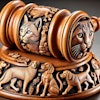
With pet product sales last year of more than CHF18 billion (US$19.2 billion) and profitability over 20%, Purina PetCare was Nestle’s second largest category, after coffee, François-Xavier Roger, chief financial officer, Nestlé, said at the Consumer Analysts Group of New York (CAGNY) conference on Feb. 24 in Boca Raton, Florida, USA.
Certain pet food types accounted for much of that performance. Dry dog, dry cat and wet cat account for 80% of Purina Petcare’s sales, he said.
“Dog accounts for two-thirds of the category with dry dog leading the way at 37%,” Nina Leigh Krueger, chief executive officer and president, Purina North America, said at the conference. “When you look at cat it's more evenly split between wet and dry.”
“We have a very strong position in cat, and especially on wet cat,” Roger said. “It happens that the cat segment is the most attractive one. This is more sophisticated. This is where you can really make a difference through technology and science, which is really the reason why we are investing heavily there.”
On the other hand, Purina puts less emphasis on pet treats. Roger said Purina executives intentionally decided not to participate in all sub-segments of pet treats since some weren’t attractive to the company. Likewise, some geographic regions contributed more to Purina’s sales and profitability.
Purina PetCare performance worldwide
“By geography, we are much stronger in North America,” Roger said. “This is where our business was born and originates from.”
“Household penetration is 60% in the United States, and that's remained flat over the last few years,” Krueger said. “There are 185 million dogs and cats out there today. During COVID there were a lot of articles around pet population increasing. We did see that, 4.7 million new pets entered the category in the last two years, which is an increase of about 2.5%. The really interesting part of that fact is that, as penetration didn't change during that time period, current existing households just got an additional dog or cat into their family.”
Purina also has a strong position in Latin America and in Europe, Roger said. Asia, especially China, holds large opportunities for Purina. The company is investing in the region on top of its existing industrial base.


















